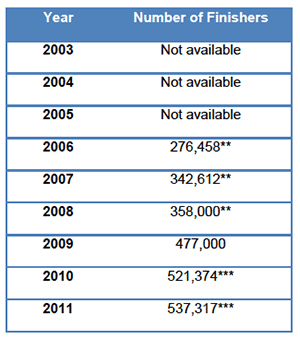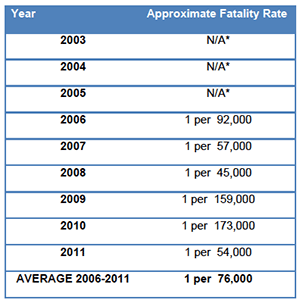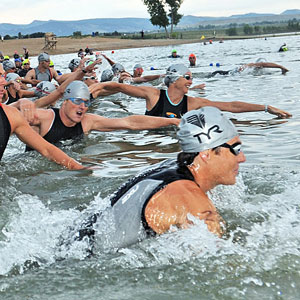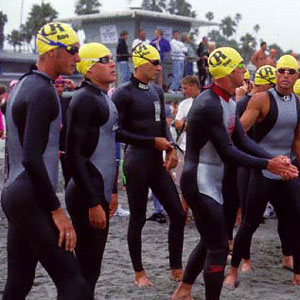Deaths in Triathlon Study Released

Today USA Triathlon (USAT, the national governing body for triathlon) released a study that tries to place into context the deaths in triathlon that have been so visible, and seemingly frequent, over the past two years. The study is heavy with data and concludes with recommendations for athletes, race directors and USAT.
The 5-member panel consisted of 3 doctors and 2 race directors. Taking the lead was Dr. Lawrence Creswell, a cardiac specialist who is also a triathlete. The study looked at every year for which the panel felt there is reliable data, commencing with 2006. During this 6-year span ending with calendar-2011 there were 30 swim-related deaths, and 38 deaths in all.
While, according to the study, deaths in triathlon seem to be in the area of 1 per 75,000 race occurrences—roughly on a par with deaths in marathon runs—deaths as a result of swimming are somewhat lower: about 1 per 90,000 using this data.
However, this is not precisely true. The data was generated using as a “race occurrence” everything that USAT sanctions. This totaled 537,317 participant occurrences in 2011, taking place at 4,334 events. There are not that many triathlons in America. Some of what USAT sanctions are clinics, training camps, and so forth. For example, for several years USAT sanctioned and insured our F.I.S.T. Tri Bike Fit Workshops, where very little bike riding and no swimming takes place.
However, the number of occurrences during 2011 of this nature are no doubt small. Of the 4,334 sanctioned events, about 2,200 are adult triathlons, and about 500 are duathlons. The rest are training camps, very short youth races or clinics. It might be fair to assume that the raw number of adult triathlon race occurrences that include a swim leg is still near, or maybe over, 500,000.
The study debunked several popularly held assumptions, the first of which is that the rate of deaths has been steadily increasing: 2009 and 2010 were exceptionally kind to triathletes in terms of deaths per race occurrence, with the lowest death rate.

Neither the length of the race, the venue (pool or open water), mass versus wave start, or athletic or race experience provided a common thread. There is no evidence that swimming-induced pulmonary edema (SIPE) was a proximate cause of death, although the panelists cautioned, “we cannot exclude the possibility of a role for SIPE in the victims’ deaths, [yet] we know of no victim with an antecedent diagnosis of SIPE and we find no information in our review that would establish this diagnosis with certainty in the victims.”
The report concludes with a list of recommendations for race athletes that underscores the need for cardiac testing and awareness of cardiac symptoms. Slowtwitch is preparing an in-depth set of best practices for all involved. First on our editorial calendar will be specific lists of cardiac tests tailored to the type of athlete (the initial set of tests for those aged under 40, and over 40; what tests should be done annually; what tests should not necessarily be done because of cost and invasiveness, but should be considered based on specific symptoms; what that testing should cost).
The panel also contrasted deaths to the 1-in-44,000 that occur in NCAA sports. However, this underscores what might be a problem with the metrics used by the panelists. “Participants” is a term used loosely in the study, and it is not specified whether this means a discrete person or a number of race occurrences. Indeed, as far as triathlon goes, it’s the latter according to a USAT spokesman. However, is that necessarily the case when contrasting with the NCAA stats? Is the NCAA really counting every competitive event every NCAA athlete contested? And, if the NCAA is counting deaths during workouts, are we also counting that in triathlon? (We are not, at least, not in this study.)
Still, this is a landmark study and compares well to those specific to other, like events such as marathon running.



